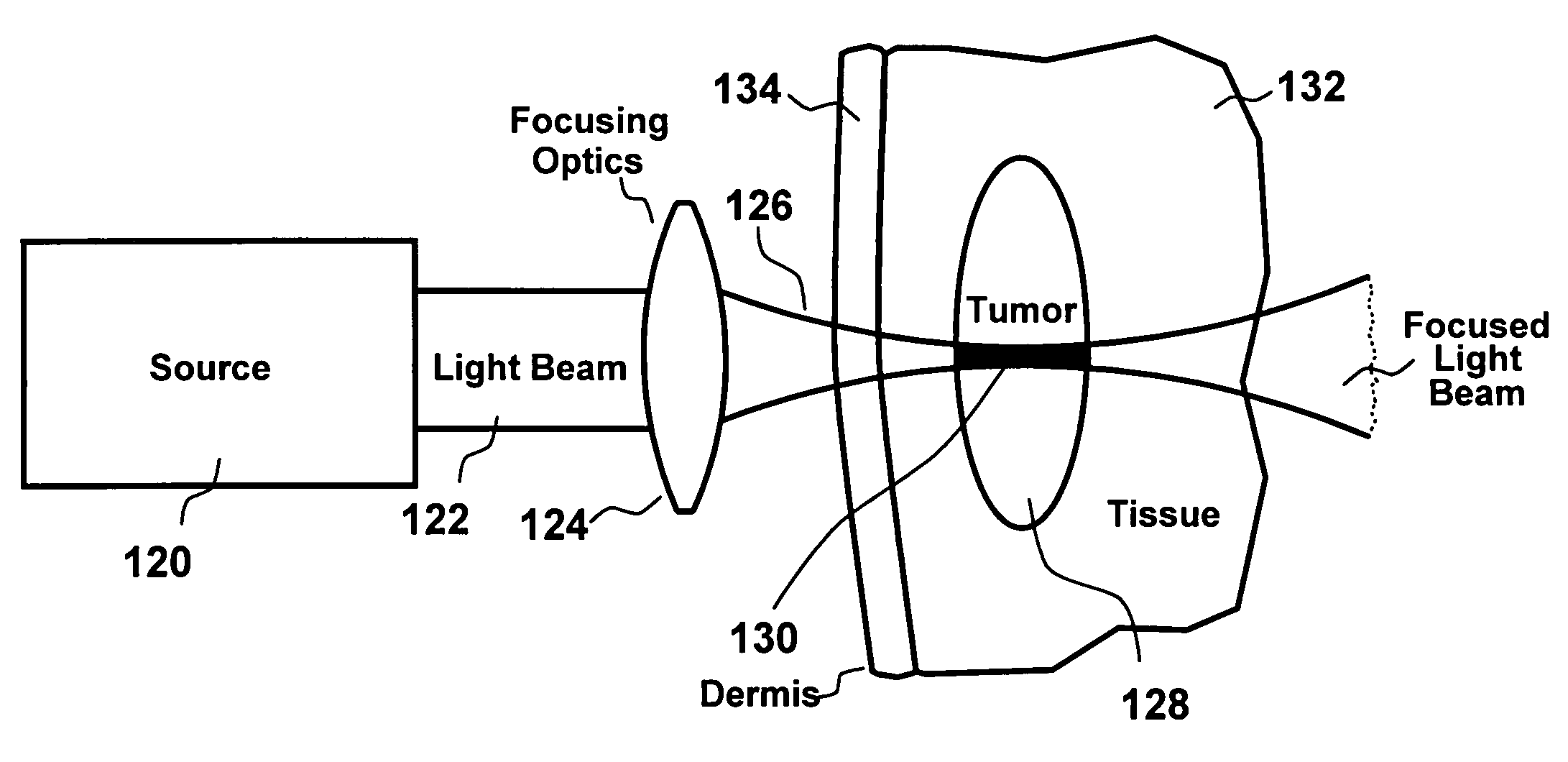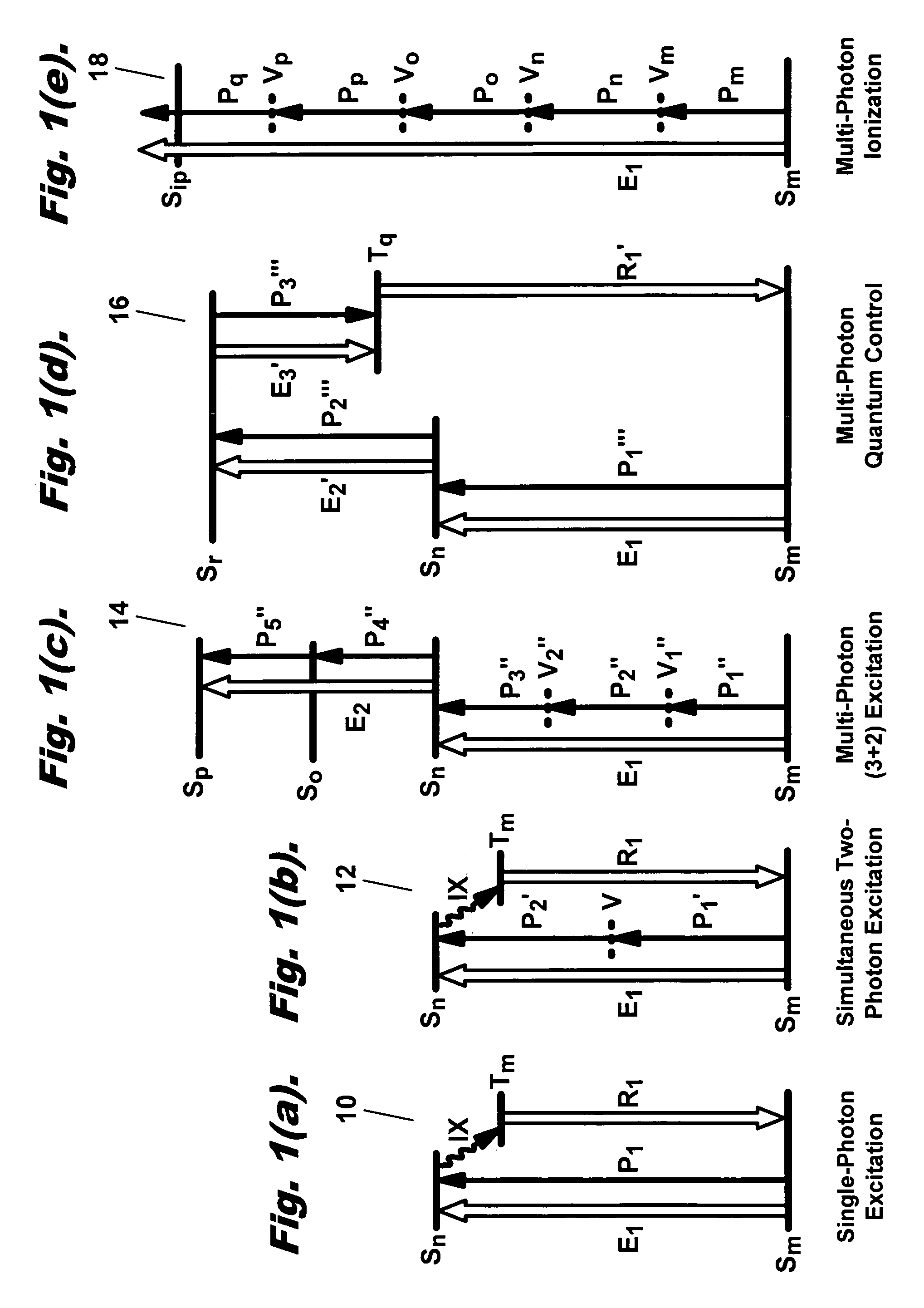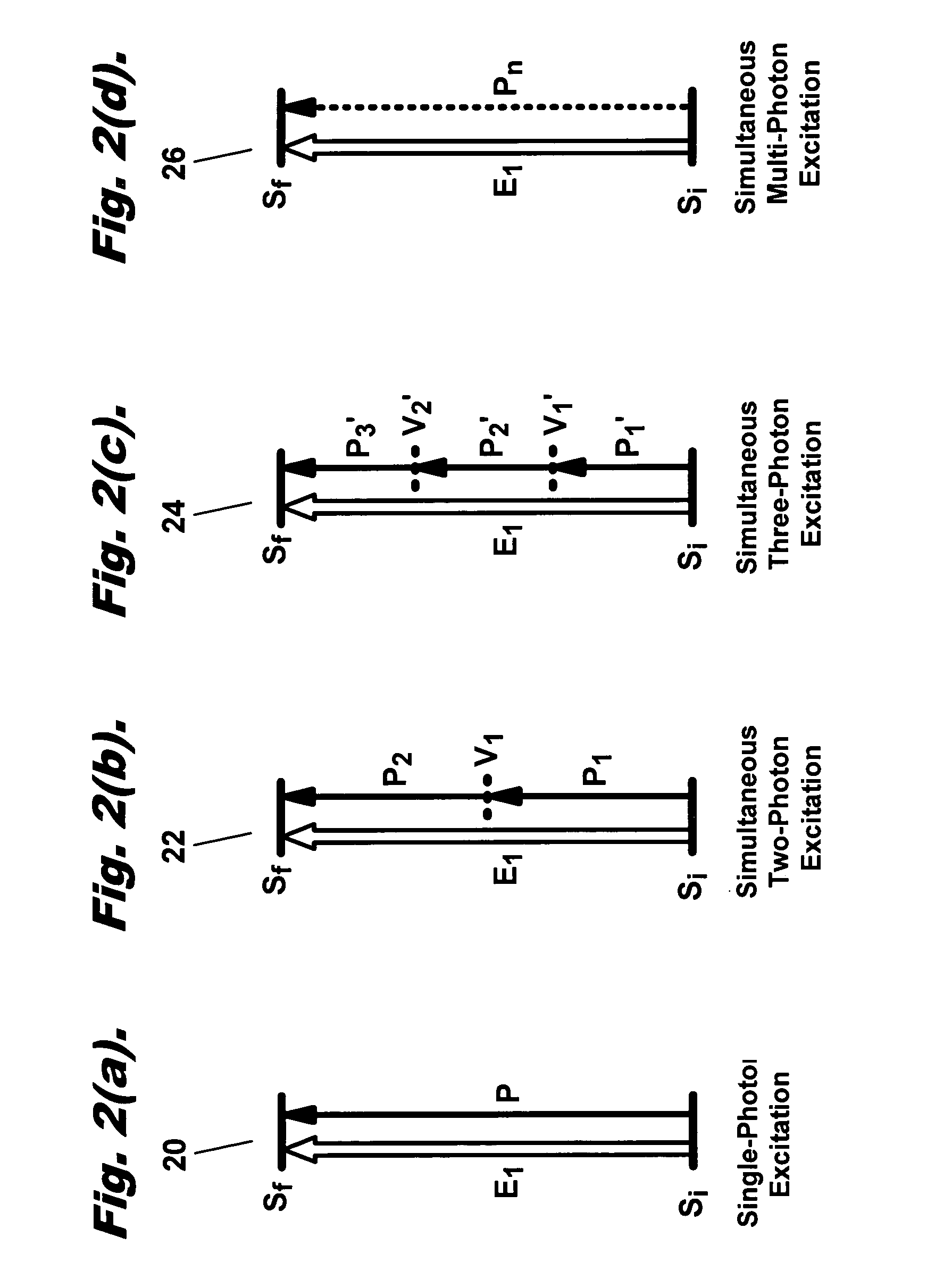Methods and apparatus for multi-photon photo-activation of therapeutic agents
- Summary
- Abstract
- Description
- Claims
- Application Information
AI Technical Summary
Benefits of technology
Problems solved by technology
Method used
Image
Examples
Embodiment Construction
[0041]The present invention described herein utilizes the unique physical properties of non-linear optical excitation of one or more endogenous or exogenous therapeutic agents to effect improved spatial control over the photo-activation of such agents via multi-photon photo-activation processes. “Non-linear optical excitation” is defined for the purposes of this application as those excitation processes involving the essentially simultaneous interaction of two or more photons with the one or more agents. “Essentially simultaneous interaction” is defined for the purposes of this application as those excitation processes occurring as a result of interaction of the one or more agents with photons provided by a single ultrashort laser pulse having a duration of approximately 10 ps or less. “Multi-photon photo-activation” is thus defined for the purposes of this application as non-linear optical excitation occurring as a result of the essentially simultaneous interaction of two or more p...
PUM
| Property | Measurement | Unit |
|---|---|---|
| Time | aaaaa | aaaaa |
| Electric charge | aaaaa | aaaaa |
| Wavelength | aaaaa | aaaaa |
Abstract
Description
Claims
Application Information
 Login to View More
Login to View More - R&D
- Intellectual Property
- Life Sciences
- Materials
- Tech Scout
- Unparalleled Data Quality
- Higher Quality Content
- 60% Fewer Hallucinations
Browse by: Latest US Patents, China's latest patents, Technical Efficacy Thesaurus, Application Domain, Technology Topic, Popular Technical Reports.
© 2025 PatSnap. All rights reserved.Legal|Privacy policy|Modern Slavery Act Transparency Statement|Sitemap|About US| Contact US: help@patsnap.com



